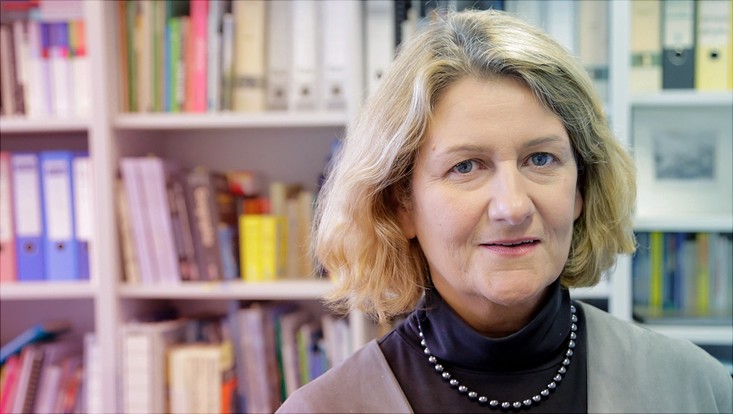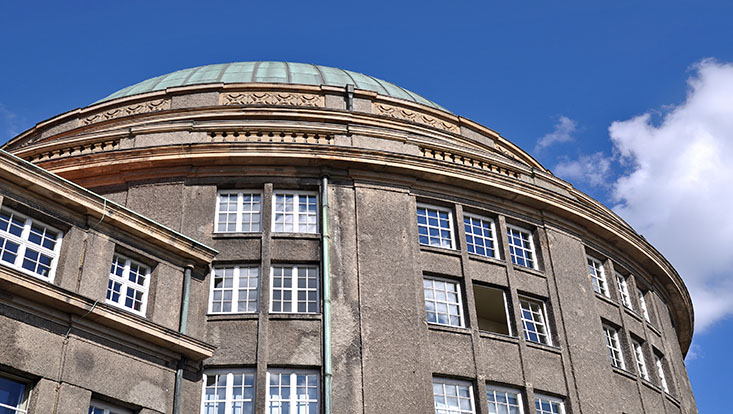UN Climate Change Conference COP 23Island states can also do something to mitigate the effects of climate change. An interview with the geographer Prof. Dr. Beate Ratter
15 November 2017, by Online services

Photo: UHH/Schöttmer
This year Fiji presided over the UN Climate Change Conference (COP 23). The island nation is already struggling with the effects of climate change: for example, 45 villages have had to be resettled due to rising sea levels. Prof. Dr. Beate Ratter researches the ways island nations adapt to climate change. In this interview, the geographer explains that a rise in the sea level is not the biggest problem threatening island states.
What is the greatest problem that climate change poses for small island states?
I can think of several problems that climate change poses for small island states. They can be more or less serious depending on the island’s location and resources. Above all, the increased intensity and frequency of major storms can be life-threatening. Storms and attendant rainfall are a problem for island populations who do not have the financial or technical resources to protect themselves.
The rise in sea level, which leads to increasingly strong swells that can lead to flooding, will have dramatic consequences.
The long-term intrusion of saltwater into scarce freshwater lenses on shallow coral islands are a very big problem for fresh water supply.
And coral reef destruction due to rising sea temperatures—including the so-called “coral bleaching”—is lethal for tropical coral islands. Moreover, marine pollution and waste in the oceans adversely affect corals. Corals offer natural protection against ocean forces. If they are destroyed, erosion attacks the islands directly.
Which islands are especially threatened by the rise in sea level?
We can’t say generally because, for example, the Shishmaref Island in Alaska is facing threats different from those that Addu Atoll in the southern Maldives faces. The northern Maldives are suffering increasingly from drought while the southern Maldives are dealing with severe flooding, like they did in the 2017 monsoon season.
Every island and every place faces its own unique threats. A shallow coral island located just meters above the current sea level will face increasing waves, coastal erosion, and flooding.
An island with cliffs is immune to direct beach erosion but increasing erosion will also attack those cliffs and endanger settlements with coastal housing and other critical infrastructure.
Or let’s take St. Helena in the southern Atlantic. Supply ships are finding it ever harder to land due to increasing sea swell and you can’t even fly into the new airport in heavy storms.
And what can we do?
It’s important, for example, to avoid constructing buildings, streets, and hotels directly on the beach. This would protect the beaches from further erosion and flooding. It would also help if wetlands and mangrove forests were put under conservation because these borders between sea and land act as natural buffers and should not be built on or chopped down.
How significant are international negotiations in fighting climate change? And what can people in regions threatened by rising sea levels do?
I’m afraid that at the Climate Conference too many different national and economic interests are at play for us to expect a quick agreement.
People in regions facing rising sea levels can do something to a certain degree: they can take matters into their own hands, although they need to adapt to conditions. Building walls on beach fronts, for example, usually increases rather than mitigates erosion. And carting beach sand away to build housing poses additional problems for small islands.
I think it’s much more important, however, for responsible governments not just to assign blame for climate change but to look to what can be done with regard to landscaping, investment decisions, and anti-corruption measures so that the effects of climate change don’t increase and their own people no longer suffer.
Which effects of climate change can we already observe on the North Sea coast, meaning at our own doorstep, and what do we need to do?
We are very well-equipped for dealing with storm tides and rising sea level on the North Sea coast for the next several decades. We have hundreds of years of experience, the technical know-how, the financial resources, and well-functioning coastal protection. The historical catastrophes and the flood of 1962 have helped us.
The fight against the sea is not only ingrained in our collective memory; it also motivates state coastal protection authorities to continuously improve. The most recent dike reinforcements, for example in Büsum or the North Beach in Schleswig-Holstein, have introduced the so-called “climate dikes.” These are wider and lower and include reserves for building higher. If the onrushing tide is higher than expected, we can heighten the dike without having to alter the foundation. Yet here, perhaps, we will face a problem in the future.
People on the North Sea coast rely on state coastal protection authorities but we still need to learn how to deal with water from the hinterlands, flooding tributaries, and heavy rains that even now overflow sewer systems and destroy windows and sun rooms.
Cluster of Excellence CliSAP
Prof. Dr. Beate Ratter from the Center for Earth System Research and Sustainability (CEN) is a member of the Cluster of Excellence „Integrated Climate System Analysis and Prediction“ (CliSAP).
CliSAP is funded by the German Research Foundation. The cluster of excellence forms the nucleus of the Center for Earth System Research and Sustainability (CEN) and is one of the founding members of the KlimaCampus Hamburg.
The CEN consolidates expertise from the natural and social sciences. It comprises 9 institutes and institutions at Universität Hamburg. The KlimaCampus Hamburg also brings universities, research institutions, and municipal institutions throughout Hamburg together.


